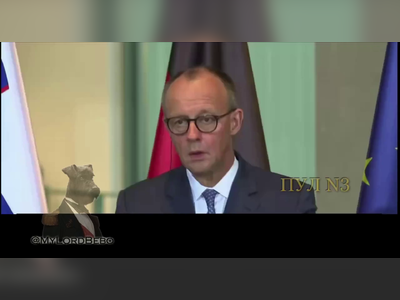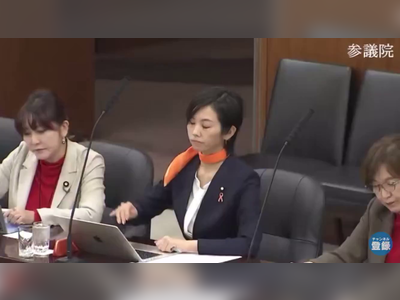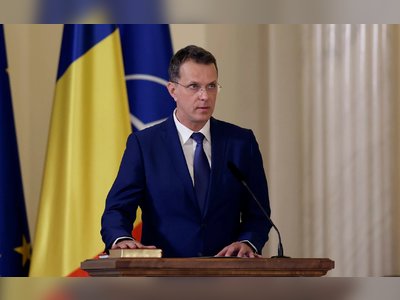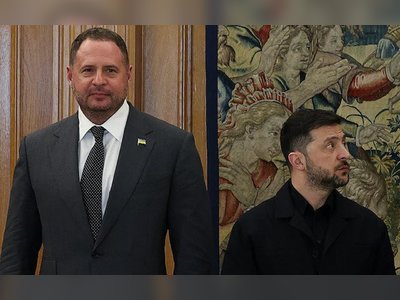Israel's Engagement in Gaza War: A Reflection on Missed Lessons
Israel would not have embarked on the Gaza war had it learned its lesson, according to a recent analysis.
Destroying a terrorist organization solely through military force is an impossible task. Research indicates that the most common way to defeat a terrorist group is by integrating it into the political process. Between 1968 and 2008, in 43% of the cases where terrorist groups were involved in the political process, political goals were achieved and the groups ceased to exist. An additional 40% of the cases saw the dissolution of terrorist groups after law enforcement or intelligence agencies arrested or killed their key leaders. For example, the self-proclaimed Islamic State was defeated militarily in 2019, but its members still carry out attacks in Iraq and Syria.
Similarly, over the past 15 years, Israel has conducted four major military operations in Gaza but has never eradicated Hamas, nor significantly reduced its military capabilities on a lasting basis. Religious-motivated terrorist organizations are particularly resilient. From 1968 to 2008, only 32% of religiously motivated groups ceased to exist, half the rate of secularly motivated ones, according to the War on the Rocks a platform specializing in military strategic issues, hosting former diplomats, soldiers, intelligence professionals, and renowned scholars studying war and international politics. An analysis by national security expert Karen M. Sudkamp at the RAND Corporation, a non-profit think tank independent of political parties. Sudkamp’s expertise lies in limiting the impact of conflicts on civilian populations. At the peak of the "global war on terrorism," she spent over a decade as an intelligence analyst, providing insights for counterterrorism military operations in Iraq and Afghanistan and participating in the development and implementation of counterterrorism policies at the Pentagon.
Hamas is considered a foreign terrorist organization but has also governed the Gaza Strip for over a decade, intertwining with the local economy, governance, and society. Thus, defeating the group necessitates a multifaceted military campaign. One approach focuses on capturing or killing Hamas leaders, much like actions against Al-Qaeda and the Islamic State in the Middle East and East Africa. While likely causing fragmentation and decentralization, the deaths of charismatic leaders like Osama bin Laden and Abu Bakr al-Baghdadi also drastically decreased their groups’ effectiveness. However, completely eliminating Hamas's influence and presence requires a more complex effort, similar to a counterinsurgency operation Hamas has integrated into Gazan society as deeply as other insurgent groups, such as the Taliban and Sri Lankan Tamil Tigers. This effort would emphasize minimizing civilian casualties and preserving local societies and economies while extending beyond the direct phase of combat.
TARGETED OPERATIONS REQUIRED
Learning from global counter-terrorism efforts would mean that operations in Gaza would be targeted, supported by detailed intelligence and precision weapons.
Instead, following an Israeli attack on October 7, the Israeli Defense Forces (IDF) reportedly dropped 6,000 bombs on Gaza in the first week alone. For comparison, the coalition led by the United States dropped 10,000 bombs over four months on Raqqa, Syria, in the fight against the Islamic State. Even employing precision weaponry and targeting, 60-80% of the city became uninhabitable. Despite the IDF's public commitment to using precision weapons, 40-45% of the munitions fired in the first two months of the war lacked guidance systems. Fighting an enemy using civilians and their infrastructure as shields in densely populated urban environments demands accuracy, as seen in the battles against the Islamic State in Mosul and Raqqa. This is the only way to limit civilian casualties and damage to infrastructure a requirement under international law.
If lessons from the global war on terrorism were applied, the IDF would also invest time in accurately targeting Hamas’s leadership. Identifying the movements and locations of such targets requires significant time and intelligence work, but it is the best way to accurately identify sites and targets, minimizing losses among civilians, including hostages.
ISRAEL’S OVERUSE OF AI IN TARGET SELECTION
The continuous use of the IDF’s AI-supported target preparation platform called “Evangélium” led to an unprecedented number of strikes in the first month of operations. With over 12,000 targets attacked, distinguishing quickly between civilians, aid workers, Hamas fighters, and leaders in a rapidly changing environment becomes challenging. Furthermore, overreliance on artificial intelligence neglects the little remaining human responsibility and morality in warfare. The broad-scale violence executed in Gaza during the initial weeks post-October 7 contrasts sharply with the targeted killing of a high-ranking Hamas official, Saleh al-Arouri, in Beirut on January 2. Israeli officials have neither confirmed nor denied perpetrating the attack, but the damages to civilians and infrastructure were minimal, demonstrating the capabilities within the bounds of the Israeli military.
The Israeli military and intelligence forces must rethink their targeting processes to prioritize minimizing civilian casualties. Ryan Evans previously highlighted that the IDF does not prioritize this in Gaza. In operations against the Islamic State, the coalition led by the United States typically had a collateral damage threshold of zero or one. If any civilian could potentially be killed in a military strike, higher approval was required to execute the operation. Following operations in Raqqa, military officials emphasized prioritizing unplanned, dynamic air strikes to support ongoing military efforts. This served to protect coalition-supported ground forces and reduce the Islamic State's capabilities, decreasing the time available to effectively and efficiently establish methods to minimize civilian casualties.
PUBLIC ACCOUNTABILITY IN MILITARY OPERATIONS ESSENTIAL FOR LONG-TERM SECURITY IN GAZA
If lessons from the global war on terrorism had been taken to heart, public accountability of military operations would be considered the cornerstone for long-term security in Gaza.
Israel can and should do more to increase transparency. The international press should be allowed to independently document military operations and communicate in real-time with Palestinian civilians living in the Gaza Strip. In addition to IDF investigations, Israel should provide unfettered access to Gaza for international human rights organizations like Human Rights Watch, Airwars, and Amnesty International to investigate and publicize civilian casualties. Cooperation between the U.S. military and international human rights organizations during operations in Afghanistan, Iraq, and Syria prompted the United States to reduce civilian casualties, improve military investigations into civilian victims, and acknowledge a higher number of civilian deaths.
PROTECTING CIVILIAN POPULATIONS IS KEY
Had Israel drawn lessons from the global war on terrorism, it would recognize that protecting civilian populations is the only way to ensure long-term security and counteract Hamas’s support.
Public opinion polls now show more Palestinians support Hamas than before the Israeli attack on October 7. However, the terrorist organization's approval rating remains below 50% in both Gaza and the West Bank. To reduce support for terrorist and rebel organizations, civilians must be provided with effective political and social options. Homes, businesses, educational institutions, and communities are necessary for rebuilding. Inadequate reconstruction efforts in Northeast Syria since 2017, along with the ongoing Syrian civil war, have provided opportunities for the Islamic State to continue its operations and pressure on civilians and local governing bodies.
WORK SHOULD BEGIN NOW ON POST-CONFLICT STABILIZATION
Had lessons from the global war on terrorism been learned, Israel would already be collaborating with international and local partners to prepare for future governance, stabilization, and reconstruction in Gaza.
Planning for post-conflict events must begin now. The reconstruction of the Gaza Strip is crucial not just for Palestinians but also for Israel's future stability and security ensuring Gaza’s economy, government, and civil society are viable respects the humanity of Palestinians, provides them with a future, and helps guarantee Israel's security. Both Israelis and Palestinians must be involved in post-conflict stabilization planning, but this planning cannot occur on separate paths. Success requires the involvement of the United States, European partners, regional Arab countries, and trusted non-governmental organizations and commercial partners. The experience of provincial reconstruction teams in Afghanistan and Iraq could provide a template for integrating multiple stakeholders, especially local leaders, into stabilization and reconstruction processes. Reconstruction plans for Ukraine, Yemen, and Mosul could also serve as models for the Gaza Strip.
Had lessons from the global war on terrorism been heeded, the warnings of veteran soldiers, intelligence officers, diplomats, and humanitarian workers about the problems associated with the Gaza war would have been taken into account. Calls for a ceasefire would have been answered. These experts including the author bring two decades of experience in preserving global security. Beyond the unnecessary destruction in Gaza and tragic loss of lives, all hard-earned lessons from the global war on terrorism are being wasted from military and intelligence perspectives.
Similarly, over the past 15 years, Israel has conducted four major military operations in Gaza but has never eradicated Hamas, nor significantly reduced its military capabilities on a lasting basis. Religious-motivated terrorist organizations are particularly resilient. From 1968 to 2008, only 32% of religiously motivated groups ceased to exist, half the rate of secularly motivated ones, according to the War on the Rocks a platform specializing in military strategic issues, hosting former diplomats, soldiers, intelligence professionals, and renowned scholars studying war and international politics. An analysis by national security expert Karen M. Sudkamp at the RAND Corporation, a non-profit think tank independent of political parties. Sudkamp’s expertise lies in limiting the impact of conflicts on civilian populations. At the peak of the "global war on terrorism," she spent over a decade as an intelligence analyst, providing insights for counterterrorism military operations in Iraq and Afghanistan and participating in the development and implementation of counterterrorism policies at the Pentagon.
Hamas is considered a foreign terrorist organization but has also governed the Gaza Strip for over a decade, intertwining with the local economy, governance, and society. Thus, defeating the group necessitates a multifaceted military campaign. One approach focuses on capturing or killing Hamas leaders, much like actions against Al-Qaeda and the Islamic State in the Middle East and East Africa. While likely causing fragmentation and decentralization, the deaths of charismatic leaders like Osama bin Laden and Abu Bakr al-Baghdadi also drastically decreased their groups’ effectiveness. However, completely eliminating Hamas's influence and presence requires a more complex effort, similar to a counterinsurgency operation Hamas has integrated into Gazan society as deeply as other insurgent groups, such as the Taliban and Sri Lankan Tamil Tigers. This effort would emphasize minimizing civilian casualties and preserving local societies and economies while extending beyond the direct phase of combat.
TARGETED OPERATIONS REQUIRED
Learning from global counter-terrorism efforts would mean that operations in Gaza would be targeted, supported by detailed intelligence and precision weapons.
Instead, following an Israeli attack on October 7, the Israeli Defense Forces (IDF) reportedly dropped 6,000 bombs on Gaza in the first week alone. For comparison, the coalition led by the United States dropped 10,000 bombs over four months on Raqqa, Syria, in the fight against the Islamic State. Even employing precision weaponry and targeting, 60-80% of the city became uninhabitable. Despite the IDF's public commitment to using precision weapons, 40-45% of the munitions fired in the first two months of the war lacked guidance systems. Fighting an enemy using civilians and their infrastructure as shields in densely populated urban environments demands accuracy, as seen in the battles against the Islamic State in Mosul and Raqqa. This is the only way to limit civilian casualties and damage to infrastructure a requirement under international law.
If lessons from the global war on terrorism were applied, the IDF would also invest time in accurately targeting Hamas’s leadership. Identifying the movements and locations of such targets requires significant time and intelligence work, but it is the best way to accurately identify sites and targets, minimizing losses among civilians, including hostages.
ISRAEL’S OVERUSE OF AI IN TARGET SELECTION
The continuous use of the IDF’s AI-supported target preparation platform called “Evangélium” led to an unprecedented number of strikes in the first month of operations. With over 12,000 targets attacked, distinguishing quickly between civilians, aid workers, Hamas fighters, and leaders in a rapidly changing environment becomes challenging. Furthermore, overreliance on artificial intelligence neglects the little remaining human responsibility and morality in warfare. The broad-scale violence executed in Gaza during the initial weeks post-October 7 contrasts sharply with the targeted killing of a high-ranking Hamas official, Saleh al-Arouri, in Beirut on January 2. Israeli officials have neither confirmed nor denied perpetrating the attack, but the damages to civilians and infrastructure were minimal, demonstrating the capabilities within the bounds of the Israeli military.
The Israeli military and intelligence forces must rethink their targeting processes to prioritize minimizing civilian casualties. Ryan Evans previously highlighted that the IDF does not prioritize this in Gaza. In operations against the Islamic State, the coalition led by the United States typically had a collateral damage threshold of zero or one. If any civilian could potentially be killed in a military strike, higher approval was required to execute the operation. Following operations in Raqqa, military officials emphasized prioritizing unplanned, dynamic air strikes to support ongoing military efforts. This served to protect coalition-supported ground forces and reduce the Islamic State's capabilities, decreasing the time available to effectively and efficiently establish methods to minimize civilian casualties.
PUBLIC ACCOUNTABILITY IN MILITARY OPERATIONS ESSENTIAL FOR LONG-TERM SECURITY IN GAZA
If lessons from the global war on terrorism had been taken to heart, public accountability of military operations would be considered the cornerstone for long-term security in Gaza.
Israel can and should do more to increase transparency. The international press should be allowed to independently document military operations and communicate in real-time with Palestinian civilians living in the Gaza Strip. In addition to IDF investigations, Israel should provide unfettered access to Gaza for international human rights organizations like Human Rights Watch, Airwars, and Amnesty International to investigate and publicize civilian casualties. Cooperation between the U.S. military and international human rights organizations during operations in Afghanistan, Iraq, and Syria prompted the United States to reduce civilian casualties, improve military investigations into civilian victims, and acknowledge a higher number of civilian deaths.
PROTECTING CIVILIAN POPULATIONS IS KEY
Had Israel drawn lessons from the global war on terrorism, it would recognize that protecting civilian populations is the only way to ensure long-term security and counteract Hamas’s support.
Public opinion polls now show more Palestinians support Hamas than before the Israeli attack on October 7. However, the terrorist organization's approval rating remains below 50% in both Gaza and the West Bank. To reduce support for terrorist and rebel organizations, civilians must be provided with effective political and social options. Homes, businesses, educational institutions, and communities are necessary for rebuilding. Inadequate reconstruction efforts in Northeast Syria since 2017, along with the ongoing Syrian civil war, have provided opportunities for the Islamic State to continue its operations and pressure on civilians and local governing bodies.
WORK SHOULD BEGIN NOW ON POST-CONFLICT STABILIZATION
Had lessons from the global war on terrorism been learned, Israel would already be collaborating with international and local partners to prepare for future governance, stabilization, and reconstruction in Gaza.
Planning for post-conflict events must begin now. The reconstruction of the Gaza Strip is crucial not just for Palestinians but also for Israel's future stability and security ensuring Gaza’s economy, government, and civil society are viable respects the humanity of Palestinians, provides them with a future, and helps guarantee Israel's security. Both Israelis and Palestinians must be involved in post-conflict stabilization planning, but this planning cannot occur on separate paths. Success requires the involvement of the United States, European partners, regional Arab countries, and trusted non-governmental organizations and commercial partners. The experience of provincial reconstruction teams in Afghanistan and Iraq could provide a template for integrating multiple stakeholders, especially local leaders, into stabilization and reconstruction processes. Reconstruction plans for Ukraine, Yemen, and Mosul could also serve as models for the Gaza Strip.
Had lessons from the global war on terrorism been heeded, the warnings of veteran soldiers, intelligence officers, diplomats, and humanitarian workers about the problems associated with the Gaza war would have been taken into account. Calls for a ceasefire would have been answered. These experts including the author bring two decades of experience in preserving global security. Beyond the unnecessary destruction in Gaza and tragic loss of lives, all hard-earned lessons from the global war on terrorism are being wasted from military and intelligence perspectives.
Translation:
Translated by AI
AI Disclaimer: An advanced artificial intelligence (AI) system generated the content of this page on its own. This innovative technology conducts extensive research from a variety of reliable sources, performs rigorous fact-checking and verification, cleans up and balances biased or manipulated content, and presents a minimal factual summary that is just enough yet essential for you to function as an informed and educated citizen. Please keep in mind, however, that this system is an evolving technology, and as a result, the article may contain accidental inaccuracies or errors. We urge you to help us improve our site by reporting any inaccuracies you find using the "Contact Us" link at the bottom of this page. Your helpful feedback helps us improve our system and deliver more precise content. When you find an article of interest here, please look for the full and extensive coverage of this topic in traditional news sources, as they are written by professional journalists that we try to support, not replace. We appreciate your understanding and assistance.













